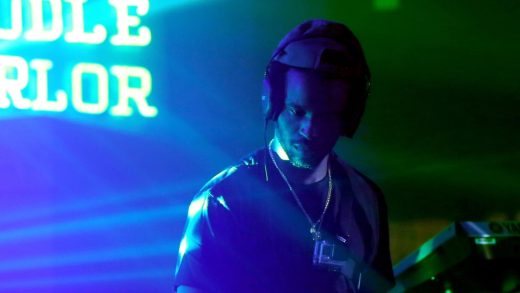Steal these 3 easy ways to cultivate creativity from a Grammy winner
When I was researching my book, I interviewed Natche about his creative process. Here are three techniques I learned from our conversation.
Work with your hands
Using only analog equipment—nothing connected to the internet—practice your craft. Make something.
In his early days as a musician, Natche used to play, practice, and experiment with instruments. As he gained success in his industry, more and more of his work was done on a computer. “So much of what I was doing just felt rigid because I’m stuck within a screen,” said Natche. As a response, he remembered what he temporarily forgot—that he used to make music outside of his screen, with instruments.
The spirit of simplicity is important to remember. Too often, life and work get complicated. We are each one person, trying to make an impact bigger than ourselves. The computer is a blessing that enables this possibility. And yet the flood of information it makes available to us can be overwhelming. We must practice the power of simplicity.
One of artist Shantell Martin’s most popular concepts and style of work involves just a black medium-width Staedtler Lumocolor marker and a white wall. Her elaborate line art can span canvases or entire walls. As she said, “It takes a ton of work and practice to get to the point when a line is a true reflection of yourself.”
Make demos, sketches, and drafts
Focus on finishing up a working version of your thing—a demo, a sketch, a draft, or something of that sort. Assume no one else will see it and that what you are making is just for you.
Pablo Picasso once said, “if it were possible, there would never be a ‘finished’ canvas but just different states of a single painting.” This tactic is about simply making a different version of something, regardless of whether it sees the light of day or stays in your storage. Along those lines, “Anything you do is basically a demo until it comes out, or it’s present,” said Natche. “Sometimes even if it comes out, it still can be a demo.”
In the New Yorker, Alex Ross wrote that composer Wolfgang Amadeus Mozart would often start a piece, set it aside, and then pick it back up months or years later. Musicologist Ulrich Konrad called this material “departure points,” which offered “a delineation of intellectual places to which Mozart could return as necessary.”
This way, with all of his departure points in mind, Mozart could essentially work on these half-explored songs, all of the time. Similarly, you could look at each piece of work as a departure point. “All that we can hope from these inspirations, which are the fruit of unconscious work, is to obtain points of departure for such calculations,” according to mathematician Henri Poincaré.
Whether you release it or not, or whatever happens after, is inconsequential. Instead, just think of everything you make as a demo, a sketch, or a draft. Remove all ideas of expectations and goals, and focus simply on the process and completion.
Take the indirect path around creative blocks
You can allow inspiration to return through breaks and collaboration.
Natche said he faces the same creative blocks as anyone else doing creative work. So he’s devised a few workarounds. One that helps he said is to, “take time and take a break and come back in later.” Rather than slog away at a song, Natche regularly takes ear breaks in between sessions to get a fresh perspective on the song when he returns.
Natche has another solution as well.
Collaborating was always the thing that helped me get out of my rut, like with musicians and doing jam sessions and writing with other people. It’s cool because I can have someone to bounce my ideas off of and they can also do something that will inspire me.
So because of this pandemic, it has been a little tough to not do that as often, because we just can’t see as many people. But it’s been cool to talk to people online and do Zoom calls and be like, “Hey, what are you doing and working on? Play me what you’re doing.”
These two tactics can work together. “So it’s just a combination, just being out, being able to sit down after trying something for a bunch of times, and just take an ear break,” Natche explained. “And then also, just sharing your ideas with other people just so you can hear a perspective that’s not yours. So that’s super important.”
Sometimes, creativity involves just simplifying and being present. As Natche described it:
At the end of the day, I think it’s paying attention. Like, it’s really, really listening to what’s happening in the world and listening to perspectives and things. Because that voice or that thing can guide you. It can guide you to your next opportunity, your next lesson, your next anything, and you just have to pay attention to those moments. And I think that’s what I try to do as I’m creating, just to bring those conversations all back to what I’m making.
Herbert Lui is the author of There Is No Right Way to Do This. He writes a newsletter that shares three great books every month and is also the editorial director at Wonder Shuttle.
(24)



